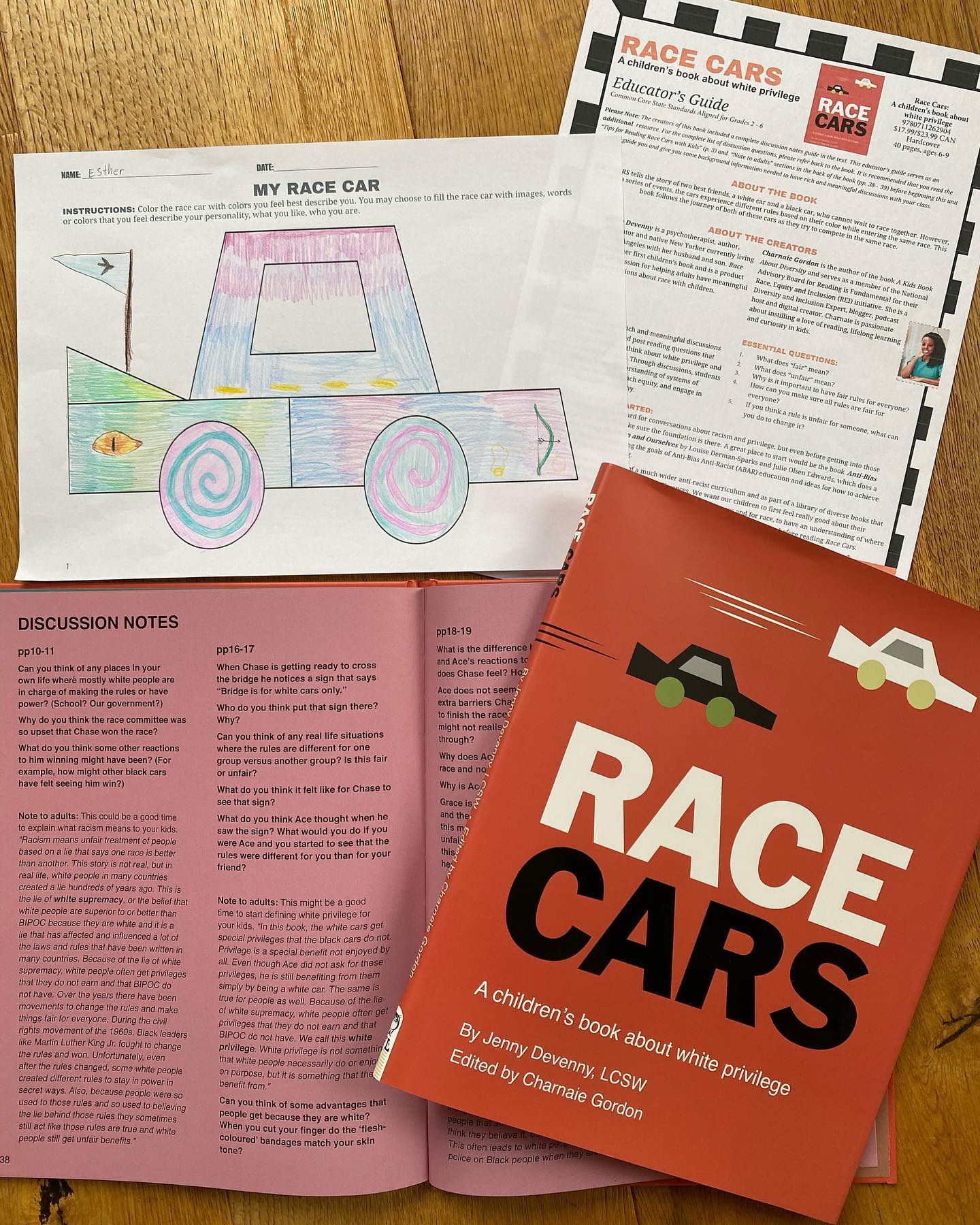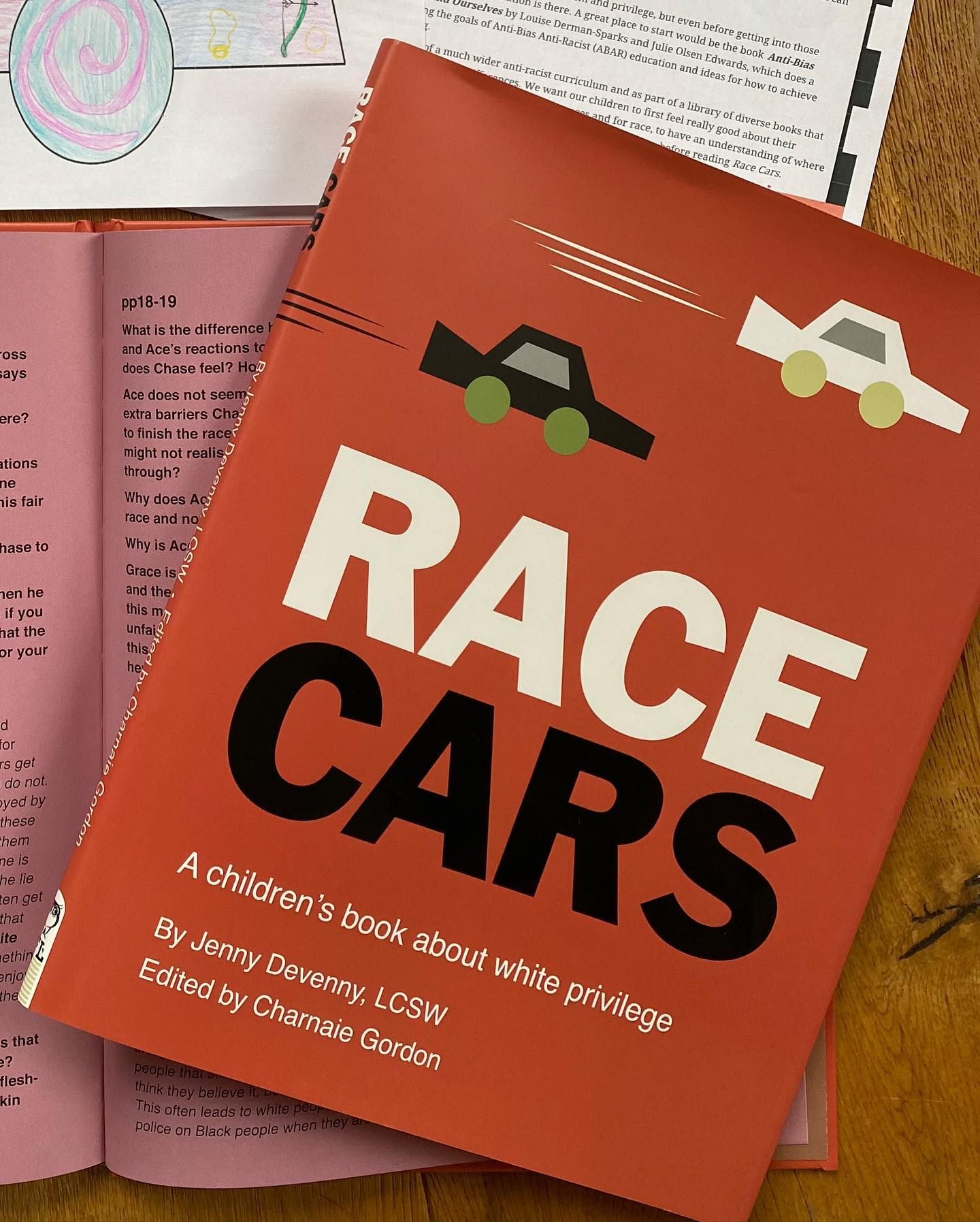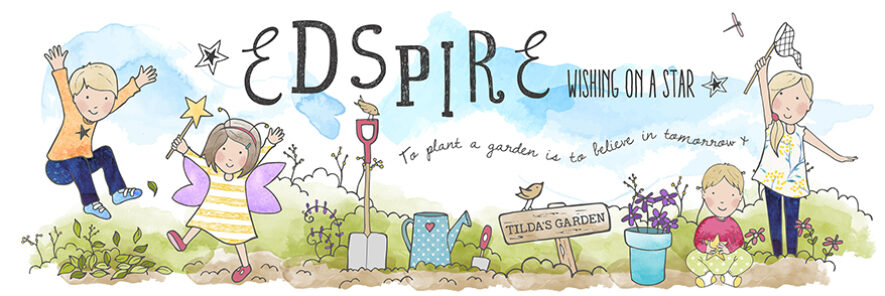We had the most amazing family discussion today, reading this book together.

Race Cars is an incredibly powerful picture book that can be used with children of all ages, and grown ups too, to start discussions around racism, prejudice and white privilege.
This book has really helped me to understand what white privilege means and learning alongside my children with the help of Race Cars has been a hugely emotional experience.
At various points throughout the story Edie, age 4, was shouting “But that’s not fair!”
And at one point Bea, age 7, asked “Can white people stand up for black people?” which led us on to talking about standing up for what we know to be right, speaking out against racism and being an ally.
Anyone who thinks picture books are just for the youngest readers needs to read this to a group of teenagers, read it for themselves. It is an incredible book and at one particular point makes tears come to my eyes.
We read this book using the Educator’s Guide which can be downloaded from the publisher’s website. There are also detailed discussion notes at the back of the book and ‘Tips For Reading Race Cars With Kids’ at the front.
I would recommend reading all the supporting materials and the story itself alone before reading this book with children.
Race Cars is a children’s book about white privilege created to help facilitate tough conversations about race, privilege and oppression.
Race Cars tells the story of two best friends, a white car and a black car, who cannot wait to race together. However, through a series of events, the cars experience different rules based on their colour while entering the same race. This book follows the journey of both of these cars as they try to compete in the same race.
Before starting the story we talked about what it means when something is fair or unfair. We talked about why fairness is important. We also talked about how being fair does not always mean treating everybody the same, it means ensuring people have what they need to ensure their opportunities and chances are equal to others. We also talked about what we should do if we think rules are unfair. The children had lots to say about all of this in relation to their own experience and circumstances. I knew that they were ready to read the story.
We meet the two best friends who have grown up together. They are getting ready to race in the annual race-car race. We learn that every year a white car wins the race. A white car has always won the top positions in the race. But when Ace and Chase race, Chase (the black car) wins first place.
This is a problem for the race committee. This is not how it has always been done and the all white, almost all male committee do not like change. We learn that the committee has always given white cars faster tires and more powerful engines. This horrified my children. They were outraged that some cars were given an unfair advantage and they were aghast that the committee decided to change the rules to make it easier for white cars to win and harder for all the other cars.
This is such a clear illustration of racism and discrimination that it was easy to get the children thinking and understanding how harmful prejudice can be. We also talked about white supremacy using the notes in the back of the book to guide us.
The children were really angry for Chase. They were also hoping from the first mention of her name, that Grace, the youngest and only female member of the committee, would stand up for Chase and all the other non white cars. We talked about how having the courage to stand up and speak out is not easy. Grace certainly believes that as a woman she will not be listened to. As the story goes on and the rules become more and more unjust, other members of the committee feel increasingly uncomfortable but still no one speaks out. My children found this hard to understand. They give me great hope for the future that they will feel able to stand up and speak out for what they know to be wrong in the future.
As a white girl who grew up with a black friend who I adorem, the story of Ace and Chase really got me thinking about white privilege and wondering how much prejudice and discrimination my best freind experienced that I just did not see, did not understand.
Through the story Ace does begin to understand the obstacles that have been placed in Chase’s way. They do begin to see how unfair the race rules are and how they have disadvantaged their friend.
My children were really affected by how sad Chase became as the rules for the race were changed. They were sad that the discrimination made him feel that something must be wrong with him for people to treat him that way.
There is a lot to process and understand in this book. It is one that we will return to again and again as mine and the children’s knowledge and understanding grows.
Talking about racism and white privilege with children is not easy. This book is an excellent place to start.

As we reach the end of the story and Ace realises how unfairly his friend and the other non white cars have been treated, we hope that things will change for the annual race-car race.
We hope that the committee will become more representative, the rules will be fair for all and that Ace and Chase will be part of the committee and work with new race cars to make the race and the organisation more equal for all going forward.
Through our hopes for the race-car race we were able to broaden our thinking to our hopes for the world. A world where people will not be unfairly treated because of the colour of their skin.
I still feel as a family we have a lot to learn and I am so very grateful for books like this one to help us have family discussions like we did today.
We are all always learning together to be better human beings and to play our part in making the world a better, fairer place to be.
